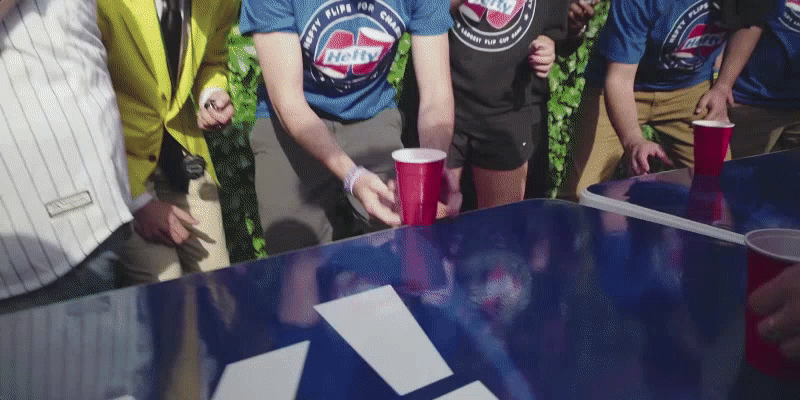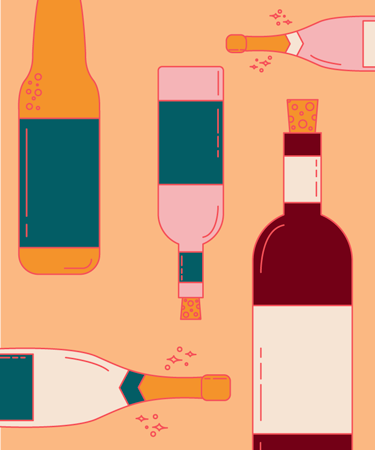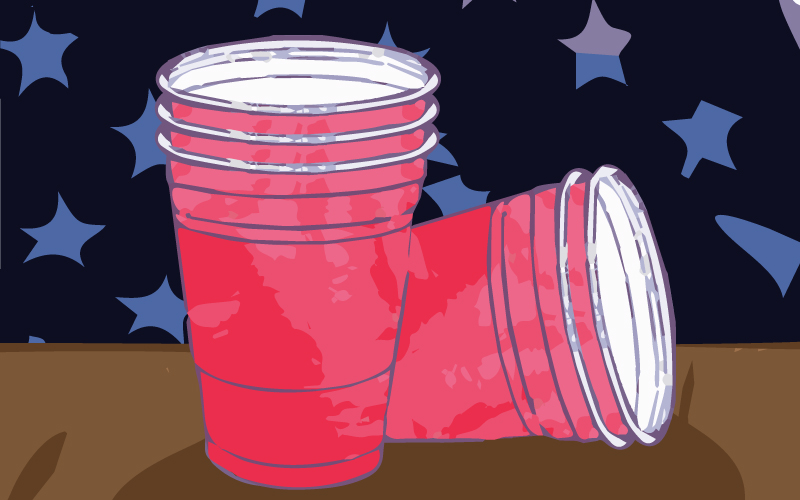Flip cup is the reality TV of drinking games. You don’t need much to make it work — a group of people, a pack of Toby Keith’s favorite beverage holders, and a rectangle table — and it’s simple.
On top of all that, it’s one of the most ubiquitous drinking games in colleges across the country. That prevalence suggests an age-old origin story (or at least as old as the Solo cup), but the true origin only goes back to the 1980s, probably.
Like most origin stories, there’s not one definitive story. Most likely, a group of college students in 1987 Hoboken, New Jersey, got the game going, Flip Cup blog writes . Exactly which college isn’t clear, but there are plenty of schools nearby, from New York University, to Columbia, to Rutgers. Regardless of the specific institute of higher learning, college students are, in all likelihood, responsible — if college students could invent beer pong, the nation’s brightest youth could surely figure out flip cup.
Those Hoboken college kids didn’t have any luxury drinking game items like ping pong balls, playing cards or dice, as the story goes. So they used what they had on hand: some beer and some cups. Hence the birth of the game.
There is, however, a more historically bent, certainly false, yet wildly entertaining flip cup origin story. The website Party Armory dates flip cup all the way back to George Washington, the Revolutionary War and the battle of Valley Forge.
In the winter of 1777-1778, Washington’s men were cold, bored, and dying from disease at an extremely high rate. On top of all that, the troops’ trigger fingers were getting out of practice. So Washington lined his men up along a table, set a cup of beer in front of them, and put those freedom-fighting firing fingers to work.
Not likely. Most of all because the tin cups Washington’s troops owned can’t flip like a Red Solo cup.
However it came about, flip cup has become one of the most popular drinking games in America, and it’s even made its way across the pond. Cadogan, an online specialty store in the UK, sells Solo-esque cups that are “not just for drinking.”
“Beer Pong and Flip Cup are the American’s drinking games of choice and they are quickly becoming the most popular drinking games in the UK,” Cadogan writes.
Flip on, flippers.

How To Play Flip Cup
Flip Cup is a game meant for large groups. There’s no maximum number, but it’s best played with eight to 20 people.
The group is split into two even teams, and each each team lines up along one side of the table. Cheap beer is poured up to the first line of the Solo cup, and each person touches the tip of their cup to the person directly across from them to make sure the teams are even.
The first members of each team (you can start at either end) kick it off by chugging their drink and then putting the cup back on the table open side up, with a slight bit of the cup hanging off the table’s edge. The player flips the cup until it lands open-side down. As soon as it lands, the next person in line follows suit.
The process continues to the end of the line, and the side that finishes first wins.
If this is old news to you, though, don’t worry, there are a few ready-made variants.
Batavia Downs
Batavia Downs is played on a circular table instead of a rectangle table. The players circle up, and then two starters are picked. The starters have to be facing each other. Each starting player chugs and flips the cup like traditional flip cup, and then it passes to the person on the right. As soon as the cup is successfully flipped, the person refills the cup with beer.
It goes around and around until someone catches up to a player who hasn’t successfully flipped yet. That unfortunate soul is the loser.
Survivor Flip Cup
Survivor flip cup is essentially just flip cup on steroids with a pop culture twist. The game is played as normal, but when a team loses, it must vote off a member of the team “Survivor”-style. The catch is that the team still has to drink and flip the same number of cups the next round, meaning one player has to flip more than once.
The team loses when it has only one person left.
Have any other variations you want to share? Let us know in the comments.

